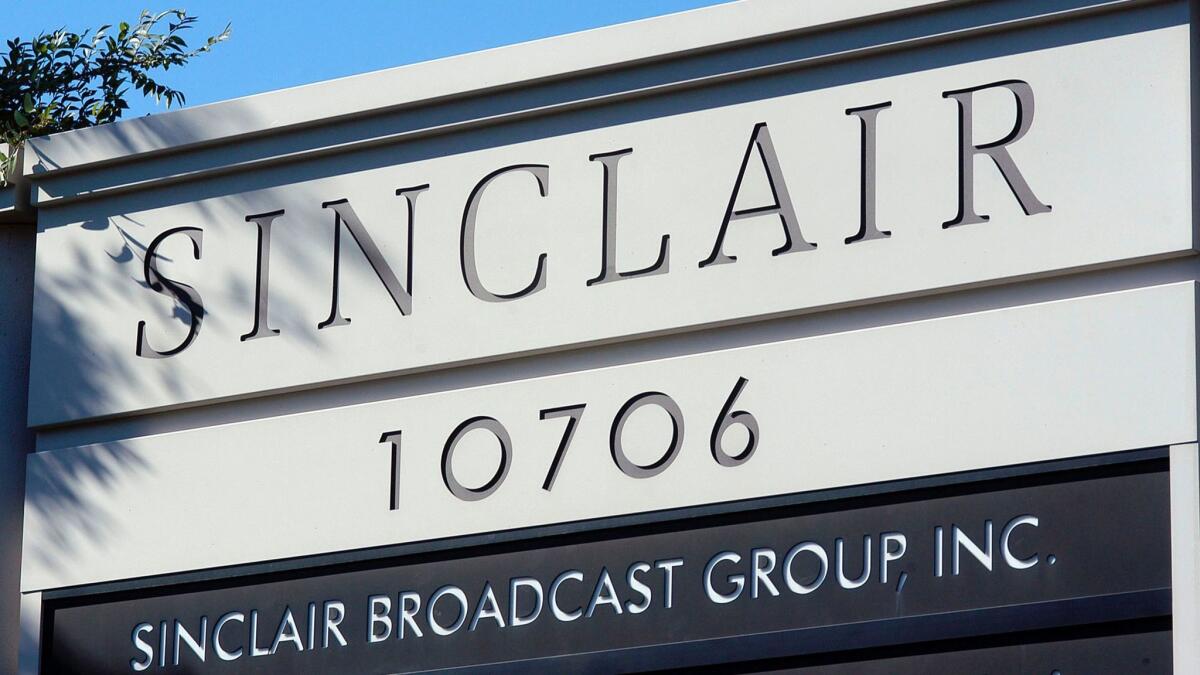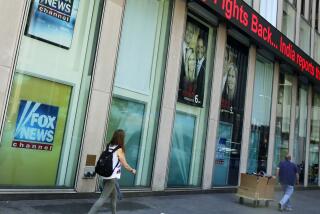Sinclair Broadcast Group is fined $13 million by FCC for failing to identify sponsored programming

The Federal Communications Commission has leveled a $13.4-million fine against Sinclair Broadcast Group for failing to identify sponsored content that aired on its TV stations.
The fine announced Thursday is the largest ever proposed by the commission for such a violation and comes at a delicate time for the Baltimore-based company, which is seeking Justice Department and FCC approvals for its proposed $3.9-billion acquisition of Tribune Media.
The FCC said Sinclair created 60- and 90-second spots that promoted the Huntsman Cancer Institute in Utah and aired them on its local newscasts, or as free-standing half-hour programs.
But the company did not identify the spots as sponsored content paid for by the Huntsman Cancer Foundation. Other non-Sinclair stations that were supplied the programs and segments were also not informed about the sponsorship, the FCC said in a statement.
The segments and programs were shown more than 1,700 times, according to the FCC.
The FCC’s sponsorship identification rules require that paid programming be identified as such to provide a clear distinction for viewers between commercials and news coverage or editorial content.
The commission said it determined that Sinclair had been in violation of its rules following an investigation based on an anonymous complaint made in April 2016. In a statement, Sinclair denied any wrongdoing and said it will contest the fine.
“Any absence of sponsorship identification in these public service segments was unintended and a result of simple human error,” Sinclair said in a statement.
Sinclair has already been widely criticized among television news professionals for forcing its stations to run segments with conservative-leaning points of view or commentaries on its local newscasts. However, those segments do not run afoul of FCC regulations.
Sinclair is currently the largest owner of TV stations in the U.S., and the merger with Tribune would give it 233 broadcast outlets reaching 72% of the country.
The proposed merger has been opposed by both liberal and conservative advocacy groups who believe it will create too much consolidation of power in the media business.
Twitter: @SteveBattaglio
More to Read
Inside the business of entertainment
The Wide Shot brings you news, analysis and insights on everything from streaming wars to production — and what it all means for the future.
You may occasionally receive promotional content from the Los Angeles Times.











